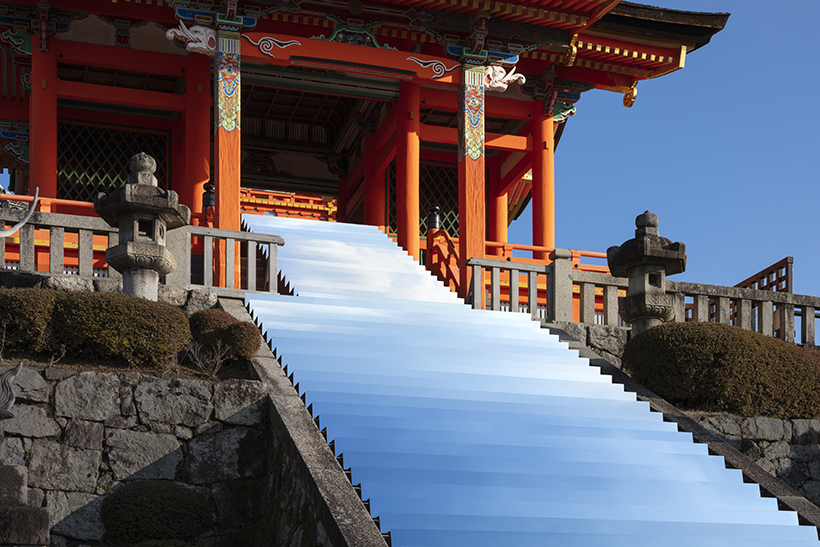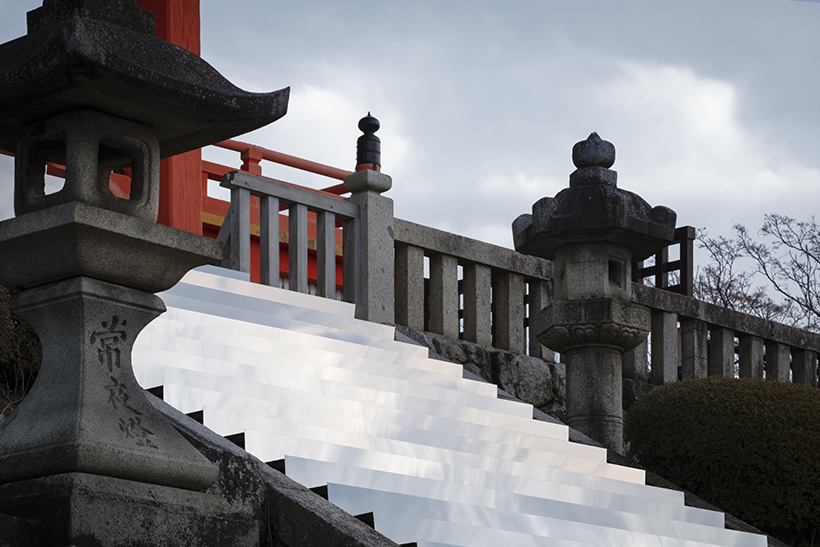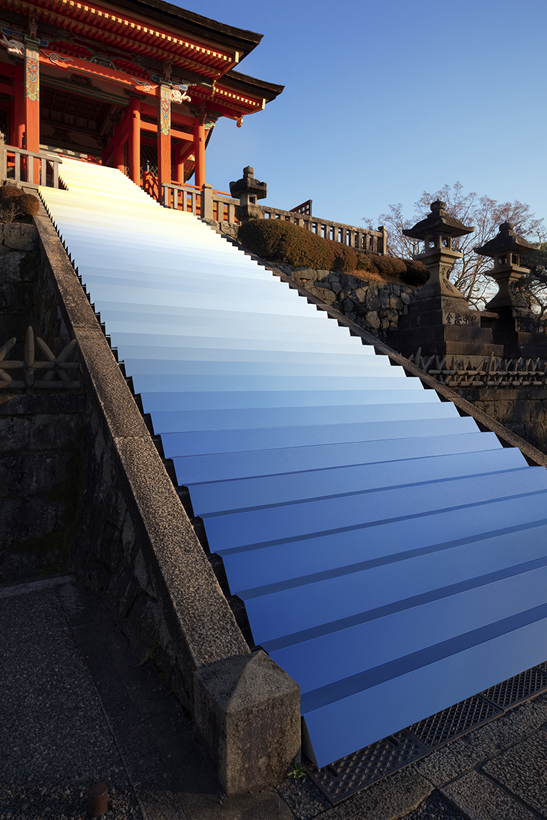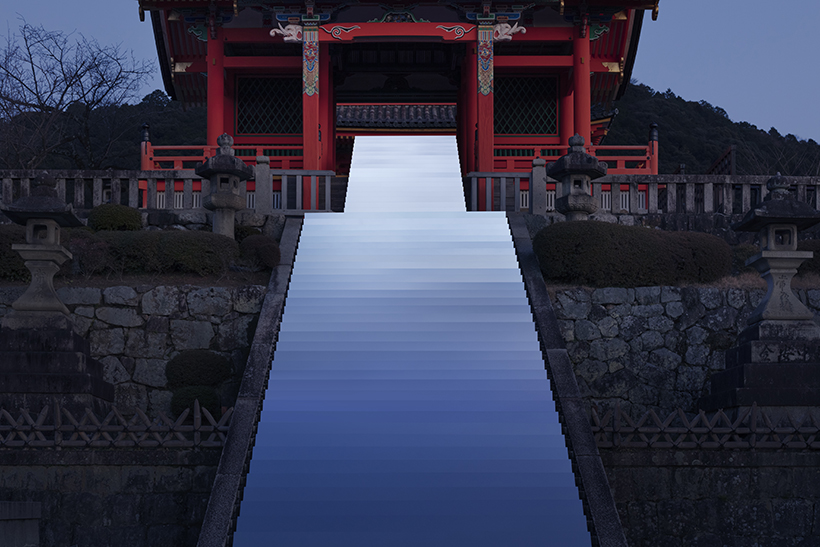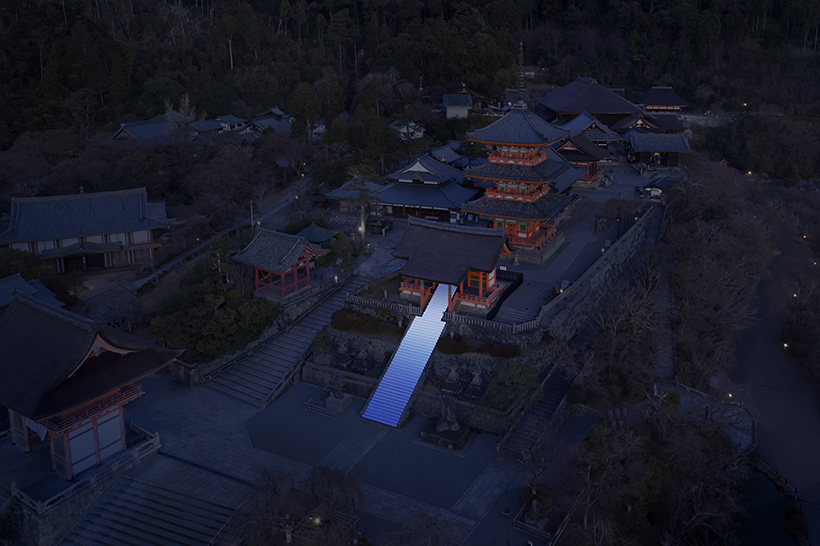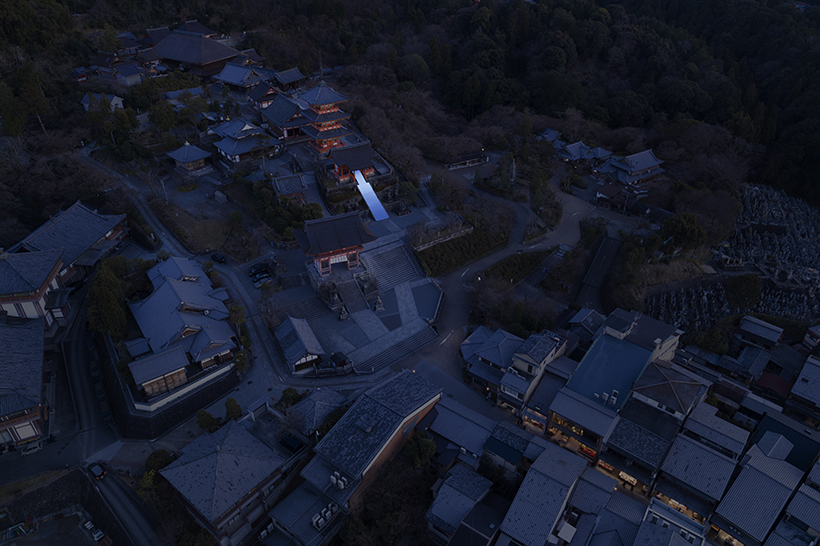nissoudan
The founding and history of Kyoto’s Kiyomizu-dera Temple stretch back over 1,200 years.
Its sai-mon (west gate) stands near the entrance to the temple grounds but slightly off the approach, a fact that reminds visitors of its original intention as less a gated path than a prayer space. In fact, it is said the space was used for practicing Nissoukan (a Buddhist method of meditation) because the view of Kyoto at dusk from the west gate was so beautiful as to remind people of the Buddhist Paradise of the Pure Land. As a method of attaining enlightenment by confronting one’s inner self by gazing at the setting sun with a still mind, Nissoukan spread not only among monks but also among the general public. These days, however, visitors may no longer enter this gate and climb only as far as the middle of the stairs.
The idea arose, therefore, to design an installation that would give visitors a sense of the original intention of the west gate, and each of the 38 stairs were covered with a mirror. The angle of the mirror on each step was determined through repeated digital simulations and on-site demonstrations. Due to the incorporation of an internal mechanism to allow fine adjustments to each mirror’ s angle during installation, the effect is that only the sky is reflected on the stairs with little interference from the visitor’ s own image or that of surrounding buildings.
Despite being still inaccessible to the public, the west gate now conversely fulfills its original intention and reveals from the bottom of the stairs the view heretofore only visible from the gate. The stairs are named after that which they reflect: Nissoudan. (For the curious soul: steps are called dan in Japanese.)











